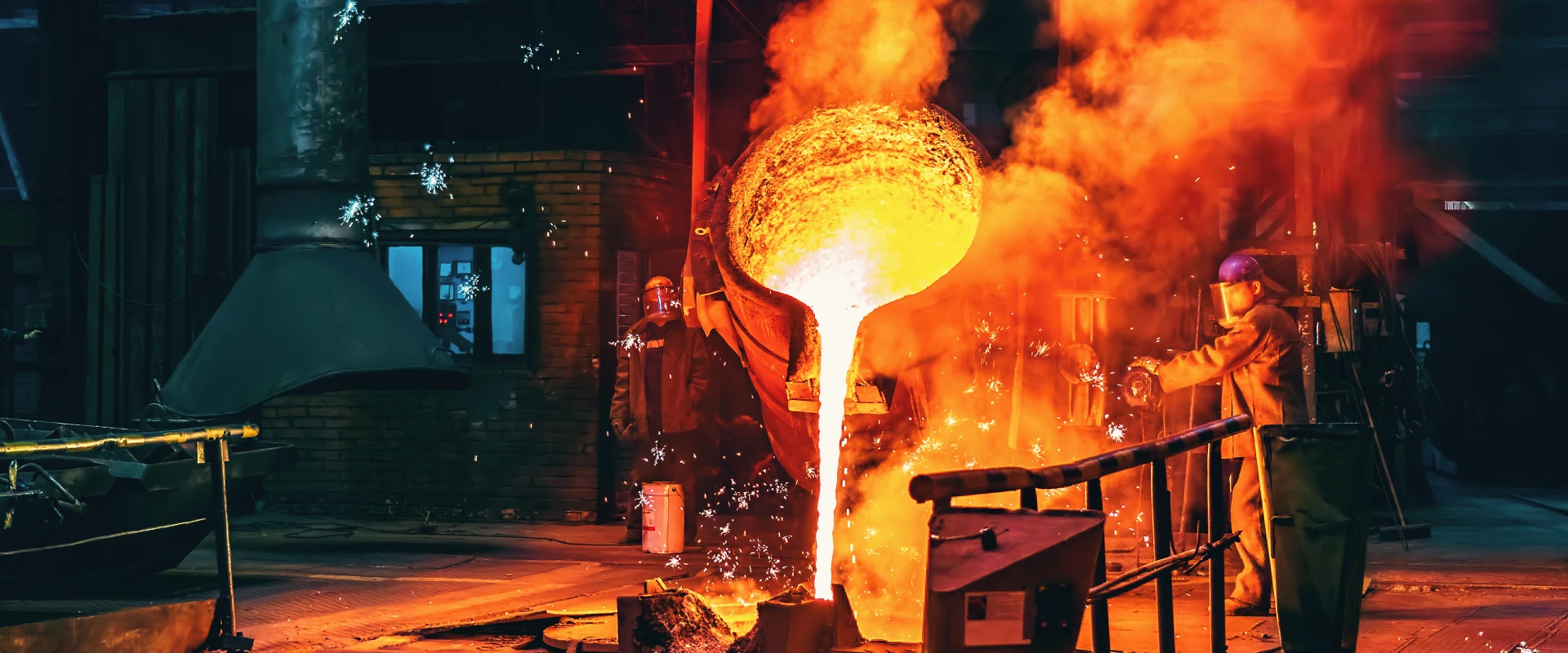High-Chromium Stainless Steel: Oxidation Resistance in Waste Incineration
High-Chromium Stainless Steel's Oxidation Resistance: Material Application Analysis in Waste Incineration Equipment
Waste incineration is a tough business—literally. The furnaces that burn trash to generate energy or reduce landfill waste operate in a brutal environment: temperatures up to 1.000°C, corrosive gases from burning plastics and chemicals, and ash that acts like sandpaper. The materials used in these furnaces, especially the liners, grates, and heat exchangers, take a beating. For years, manufacturers struggled with short lifespans—some parts lasting just 6–12 months before corroding or wearing out. Enter high-chromium stainless steel, a material with exceptional oxidation resistance that’s changing the game. Its ability to stand up to high temperatures and corrosive conditions is making waste incineration equipment more reliable and cost-effective. Let’s dive into why high-chromium stainless steel works so well here and how it’s being used.
Why Oxidation Resistance Matters in Waste Incineration
Oxidation is what happens when metal reacts with oxygen, forming a layer of oxide (like rust on iron). In waste incinerators, this process is supercharged by high heat. At 800°C and above, most metals form thick, flaky oxide layers that peel off, exposing fresh metal to further attack. Over time, this eats away at the material—liners thin, grates develop holes, and heat exchangers lose efficiency.
The problem gets worse with the mix of gases in incinerators. Burning trash releases chlorine, sulfur, and other corrosive elements. These gases react with metal oxides, creating volatile compounds that speed up the oxidation process. A standard 304 stainless steel (with 18% chromium) might last a year in an incinerator before showing severe oxidation damage. For plant operators, this means frequent shutdowns for repairs, costing tens of thousands of dollars in lost production each time.
High-chromium stainless steel fights this by forming a thin, tough oxide layer that sticks to the surface, acting like a shield. The key is chromium content—grades with 20% or more chromium create a more stable oxide layer that resists peeling, even at high temperatures and in corrosive gas mixtures.
What Makes High-Chromium Stainless Steel Different
High-chromium stainless steel isn’t a single grade—it’s a family of alloys with chromium levels ranging from 20% to 30%, often blended with nickel, silicon, or molybdenum to boost performance. Here are the stars for waste incineration:
446 Stainless Steel: With 23–27% chromium and low nickel, this ferritic grade is a workhorse. It forms a dense chromium oxide layer that resists oxidation up to 900°C. It’s also budget-friendly, making it popular for furnace liners and ash chutes.
253 MA: A high-temperature austenitic grade with 21% chromium, 11% nickel, and small amounts of cerium (a rare earth metal). The cerium helps the oxide layer stick better, even when temperatures spike to 1.050°C. It’s a top choice for heat exchanger tubes, where heat transfer efficiency depends on a smooth, intact surface.
310 Stainless Steel: This austenitic alloy has 25% chromium and 20% nickel, offering excellent oxidation resistance up to 1.100°C. It’s more expensive but worth it for critical parts like burner nozzles, which face direct flame contact.
What sets these apart from regular stainless steel? A 304 grade with 18% chromium starts to oxidize rapidly above 800°C, while 446 with 25% chromium can handle 900°C for years. It’s like comparing a rain jacket to a fireproof coat—both protect, but one thrives in extreme conditions.
Real-World Applications in Waste Incineration Equipment
High-chromium stainless steel is proving its worth in every part of a waste incineration system:
Furnace Liners: The inner walls of the incinerator, which face direct heat and gas flow, are a prime spot for oxidation. A plant in Germany replaced its 304 stainless steel liners with 446. The 304 liners needed replacement every 10 months; the 446 liners are still going strong after 3 years, with only minor surface oxidation. “We used to schedule a full shutdown every winter to replace liners,” says the plant manager. “Now, we just do a quick inspection.”
Grate Systems: The grates that move trash through the furnace must resist both oxidation and abrasion from ash. A facility in the U.S. switched to 253 MA for its grate bars. The previous carbon steel bars lasted 6 months; the 253 MA bars have been in service for 2 years, showing less than 1mm of wear. The secret? The chromium oxide layer acts like a lubricant, reducing friction from moving ash.
Heat Exchangers: These capture heat from exhaust gases to make steam (for electricity or heating). Their tubes are exposed to hot, corrosive gases. A waste-to-energy plant in Sweden tested 310 stainless steel tubes against the previous nickel alloy ones. The 310 tubes performed almost as well (lasting 5 years vs. 6 for nickel alloys) but cost 40% less. “We’re saving $200.000 per heat exchanger replacement,” notes their engineer.
Ash Conveyors: The systems that move incinerator ash (which is often acidic) need corrosion and oxidation resistance. A UK plant uses 446 stainless steel for its conveyor belts. Unlike the painted carbon steel belts they replaced, which rusted through in 8 months, the 446 belts have run for 3 years with no signs of corrosion.
How High-Chromium Stainless Steel Fights Oxidation and Corrosion
The magic lies in that protective oxide layer. When high-chromium stainless steel is exposed to oxygen at high temperatures, the chromium reacts first, forming a layer of chromium oxide (Cr₂O₃) just 0.1–1 micron thick. This layer is tightly bonded to the metal, acts as a barrier to further oxygen penetration, and self-heals if scratched—chromium in the steel migrates to the damaged area to form new oxide.
In waste incinerators, where chlorine and sulfur gases are present, this layer faces extra challenges. Chlorine can react with chromium to form volatile compounds that vaporize, thinning the oxide layer. High-chromium grades counter this by having enough chromium to replenish the layer faster than it’s lost. For example, 446’s 25% chromium ensures there’s plenty of “reserve” to maintain the oxide shield, even in chlorine-rich environments.
Silicon, added to grades like 253 MA (at 1.4–2%), helps too. It forms a silicon oxide layer beneath the chromium oxide, creating a double barrier that’s more resistant to sulfur attack. Tests show 253 MA loses just 0.02mm of material per year in sulfur-rich incinerator gases, compared to 0.1mm for 304 stainless steel.
Cost vs. Longevity: Making the Case for High-Chromium Grades
High-chromium stainless steel costs more upfront than carbon steel or standard stainless steel. 446. for example, is about 30% pricier than 304. and 310 can cost twice as much. But the longer lifespan more than makes up for it.
Let’s crunch the numbers for a furnace liner:
Carbon steel liner:
5.000toinstall,lasts6months.Totalcostover5years:
50.000 (10 replacements).
304 stainless steel liner:
8.000toinstall,lasts12months.Totalcostover5years:
40.000 (5 replacements).
446 stainless steel liner:
10.000toinstall,lasts36months.Totalcostover5years:
16.666 (1.67 replacements).
That’s a 67% savings with 446 over 304. and 67% over carbon steel. For larger components like heat exchangers, the savings are even bigger—often in the hundreds of thousands of dollars.
A waste management company in France calculated that switching all critical incinerator parts to high-chromium stainless steel reduced their annual maintenance budget by $1.2 million. “The upfront cost made us nervous at first,” says their operations director. “But after two years, it’s clear it was the right call.”
Overcoming Challenges with High-Chromium Stainless Steel
It’s not all smooth sailing—high-chromium grades have their quirks that need managing:
Brittleness at High Temperatures: Ferritic grades like 446 can become brittle if heated above 900°C and cooled too quickly. This is solved by annealing (slow cooling) after welding or high-temperature use. A fabricator in Italy started annealing 446 liners after installation, reducing cracking by 90%.
Welding Difficulty: High chromium content can make welding tricky, as it increases the risk of carbide formation (which weakens the metal). Using low-carbon versions (like 446LC) or special welding rods with extra chromium helps. A UK workshop switched to chromium-rich rods for 310 welds, and post-weld tests showed no loss in oxidation resistance.
Cost for Small Plants: Smaller incinerators might struggle with the upfront cost. Some solve this by using high-chromium steel only for the most critical parts (like burner nozzles) and standard steel for less stressed areas. A community incinerator in Canada did this, cutting costs by 30% while still extending key part lifespans.
Future Developments: Even Better High-Chromium Alloys
Researchers are tweaking high-chromium stainless steel to handle even harsher incineration conditions. One promising direction is adding aluminum (1–3%) to form a mixed chromium-aluminum oxide layer, which resists chlorine attack better than chromium oxide alone. Tests on a prototype alloy with 24% chromium and 2% aluminum showed it lasted 50% longer than 446 in high-chlorine environments.
Another trend is “lean” high-chromium grades—using less nickel (or none) to cut costs while keeping chromium levels high. A new ferritic grade with 22% chromium and 0.5% nickel performs almost as well as 446 but costs 15% less, making it appealing for budget-conscious plants.
Why This Matters for Sustainable Waste Management
Waste incineration is a key part of sustainable waste management, reducing landfill use and generating energy. But its effectiveness depends on reliable equipment. High-chromium stainless steel makes incinerators more efficient by reducing downtime, lowering maintenance costs, and extending plant lifespans.
A study by an environmental research group found that incinerators using high-chromium stainless steel parts had 30% fewer emissions from unplanned shutdowns and repairs. “When a furnace is down, trash piles up, and backup diesel generators often kick in,” explains the study’s lead author. “Reliable equipment means cleaner, more consistent operation.”
For communities and operators, this translates to more efficient waste processing, lower costs, and a smaller environmental footprint. High-chromium stainless steel might not be the most glamorous material, but it’s a unsung hero in making waste incineration a viable, sustainable solution.
In the end, the next time you drive by a waste incineration plant, remember the tough materials working inside. High-chromium stainless steel’s ability to resist oxidation in that harsh environment isn’t just about durability—it’s about keeping our waste management systems running smoothly, efficiently, and sustainably for years to come.

